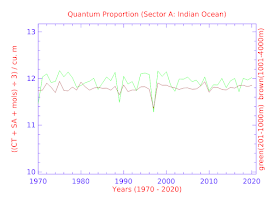 |
| Fig. 1 Antarctica Sectors / Areas |
"In physics, absorption of electromagnetic radiation is how matter (typically electrons bound in atoms) takes up a photon's energy — and so transforms electromagnetic energy into internal energy of the absorber (for example, thermal energy)".
(Wikipedia photon absorption, cf. Beer-Lambert law). Things will move along once researchers grasp the ghost photons and ghost plumes that heretofore, in grandfather's oceanography (for the most-part) evaded discovery (The Ghost Plumes, 2, 3, 4, 5, 6, 7, 8, 9, 10, 11, 12, 13, 14, 15; The Ghost Photons, 2, 3).
The oceans vary in quantity and type of quanta of their seawater, but for the most part (other than H2O), here is what they are made of:
The six most abundant ions of seawater are chloride (Cl−), sodium (Na+), sulfate (SO24−), magnesium (Mg2+), calcium (Ca2+), and potassium (K+). By weight these ions make up about 99 percent of all sea salts. The amount of these salts in a volume of seawater varies because of the addition or removal of water locally (e.g., through precipitation and evaporation). The salt content in seawater is indicated by salinity (S), which is defined as the amount of salt in grams dissolved in one kilogram of seawater and expressed in parts per thousand. Salinities in the open ocean have been observed to range from about 34 to 37 parts per thousand (0/00 or ppt), which may also be expressed as 34 to 37 practical salinity units (psu).
Chlorine (Cl), chemical element, the second lightest member of the halogen elements, or Group 17 (Group VIIa) of the periodic table. Chlorine is a toxic, corrosive, greenish yellow gas that is irritating to the eyes and to the respiratory system.
Potassium is a chemical element with the symbol K (from Neo-Latin kalium) and atomic number 19. Potassium is a silvery-white metal that is soft enough to be cut with a knife with little force.[5] Potassium metal reacts rapidly with atmospheric oxygen to form flaky white potassium peroxide in only seconds of exposure. It was first isolated from potash, the ashes of plants, from which its name derives. In the periodic table, potassium is one of the alkali metals, all of which have a single valence electron in the outer electron shell, that is easily removed to create an ion with a positive charge – a cation, that combines with anions to form salts.
Potassium in nature occurs only in ionic salts. Elemental potassium
reacts vigorously with water, generating sufficient heat to ignite hydrogen emitted in the reaction, and burning with a lilac-colored flame. It is found dissolved in sea water (which is 0.04% potassium by weight[6][7]), and occurs in many minerals such as orthoclase, a common constituent of granites and other igneous rocks.[8]
(Seawater, Britannica). This raises the question, do the 'salinity' elements in seawater emit the infrared photons that melt glacial ice, or do the H2O molecules in seawater do it alone?
 |
| Fig. 2 'Heat' is infrared photons |
Today's graphs are in appendices: Sector A, Sector B, Sector C, Sector D, Sector E, and Sector F (they may help answer the question).
These graphs concern different areas of Antarctica's glacial grounding lines (Fig. 1, Antarctica 2.0 - 11).
They indicate 'maybe both' (i.e. both the h2o molecules and the other 'salinity' molecules in seawater may all emit infrared photons which enter the glacial ice's h2o molecules and cause a heat increase until melting takes place, Fig. 2).
The next post in this series is here, the previous post in this series is here.
























